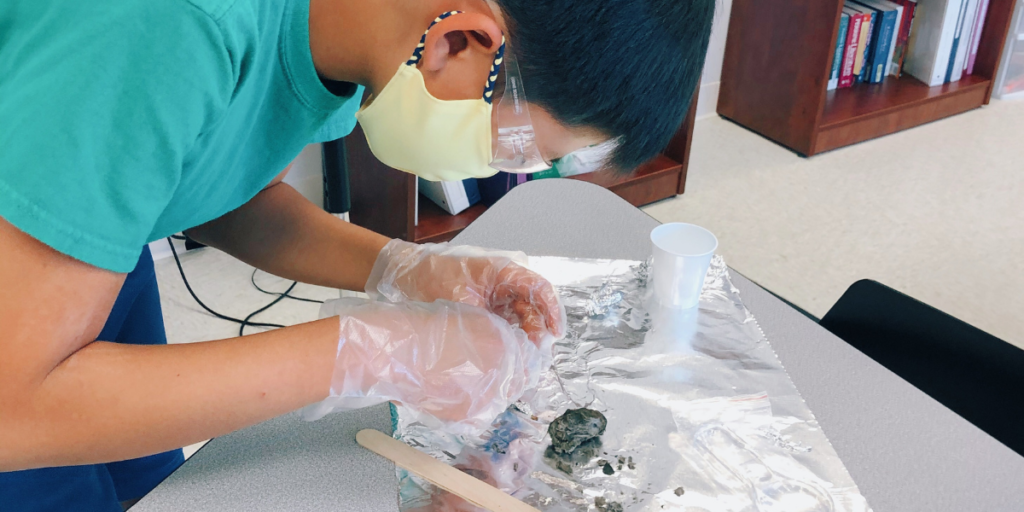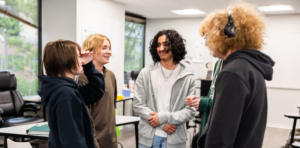Ecosystems Experience

Ecosystems Experience Blog – by Jon McKenney
At The Sycamore School, instead of separate core classes, students engage in transdisciplinary experiences each semester that weave together content from english, science, history, and math under a unifying theme. Past themes have included Identity, Civilizations, Motion, and Forensics.
This year, our Middle School 2 cohort (6th and 7th graders) is participating in the Ecosystems experience. Some central questions of the experience include
- How does climate change impact ecosystems?
- How do humans, animals, and plants all interact?
- How can I as an individual make a positive impact on my local environment?
These are all big questions, ones that professionals can devote years or lifetimes to studying. They are also questions that the Middle School 2 cohort wrestles with on a daily basis here at The Sycamore School.
Transdisciplinary Learning
At TSS, we like to do things differently. From our mixed cohorts to our Friday field trips, we’ve found that the everyday approach to learning just isn’t for us. So it should come as no surprise that we adopt this ethos when planning the curriculum for students. These semester-long deep dives allow for students to look at one theme, ecosystems in this case, through a variety of lenses. Science, social studies, math, and language arts all interact with one another to produce a transdisciplinary course that challenges students while allowing them to work at their own pace.
Experiences feature two items: the essential question (EQ) and the final project. For our MS2 cohort, the question students return to time and time again in this experience is “How do I fit within my ecosystem?”. We take a broad view of ecosystems, from as small as The Sycamore School to all of Northern Virginia and beyond. Classes build towards the final project, which, in this case, is an informative presentation on the ecosystem of their choice. This allows for students to work on their research and public speaking skills while personalizing their learning. From the depths of the ocean to the top of Mt. Rainier, all ecosystems are viable choices. What’s important is that the student is interested in it.
Already in our experience class, students have dissected an owl pellet to learn about predator-prey relationships in forests. As a precursor to this lab, they created food webs, to show the complex relationships in a seemingly simple ecosystem. Currently, students are learning about the Chesapeake Bay watershed, and how it impacts our lives. These activities, which include graphic organizers, video reflections, and class discussions, all lead up to students building their own watershed, and seeing the impact of pollution on it.
Students have been learning about the worldwide impact of pollution through videos and articles focused on the Pacific Garbage Patch. The seemingly small piece of plastic can have an enormous impact on the ocean, and already students are brainstorming ways that they can reduce their plastic usage and do their part to clean up oceans.
Book Talk
Another unique part of The Sycamore School’s learning model is the book talk. At the beginning of the term, students select a book from a curated list and have weekly discussions with partners about their reading. They are taught to annotate and analyze the text with the essential question in mind and work towards a final project of their choice that answers this essential question. Personalization and student choice are key parts of the school’s philosophy, and the book talk project is no exception. Student projects can range from designing a t-shirt to putting together a playlist.
What is the takeaway? Aside from building academic skills such as research, writing, and analysis, we want students to see how they fit within their communities— local, regional, and global. We want them to come away not disheartened by the ongoing destruction of ecosystems, but invigorated to do something about it. We want students to come away with their curiosity piqued and asking more questions than when they started.
Learn more about our Middle School academics here.
Posted in:

